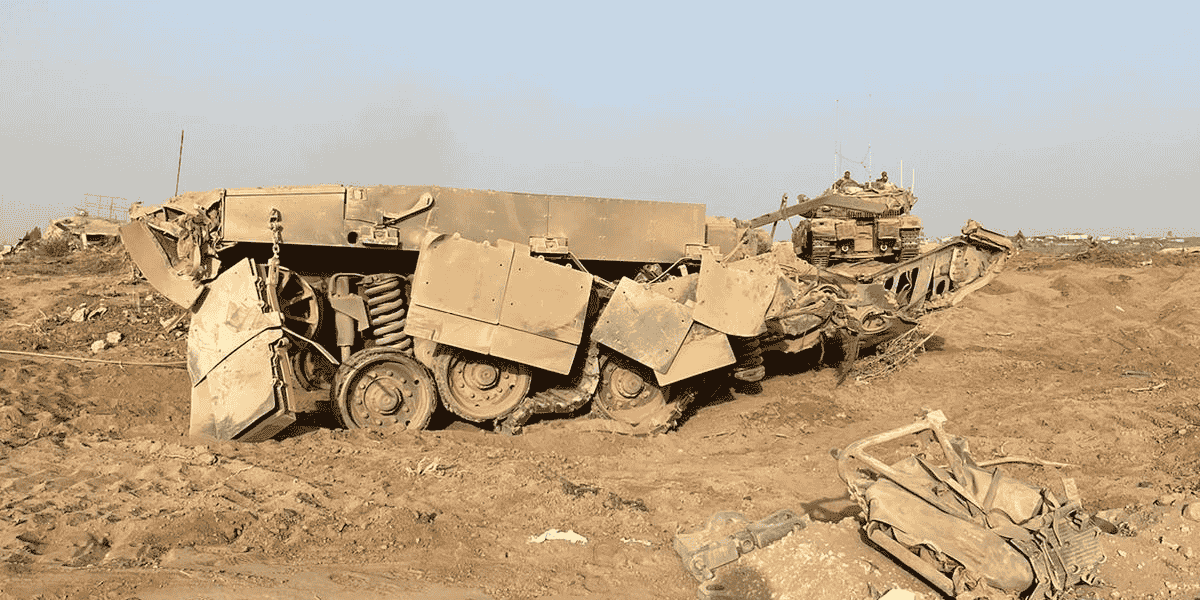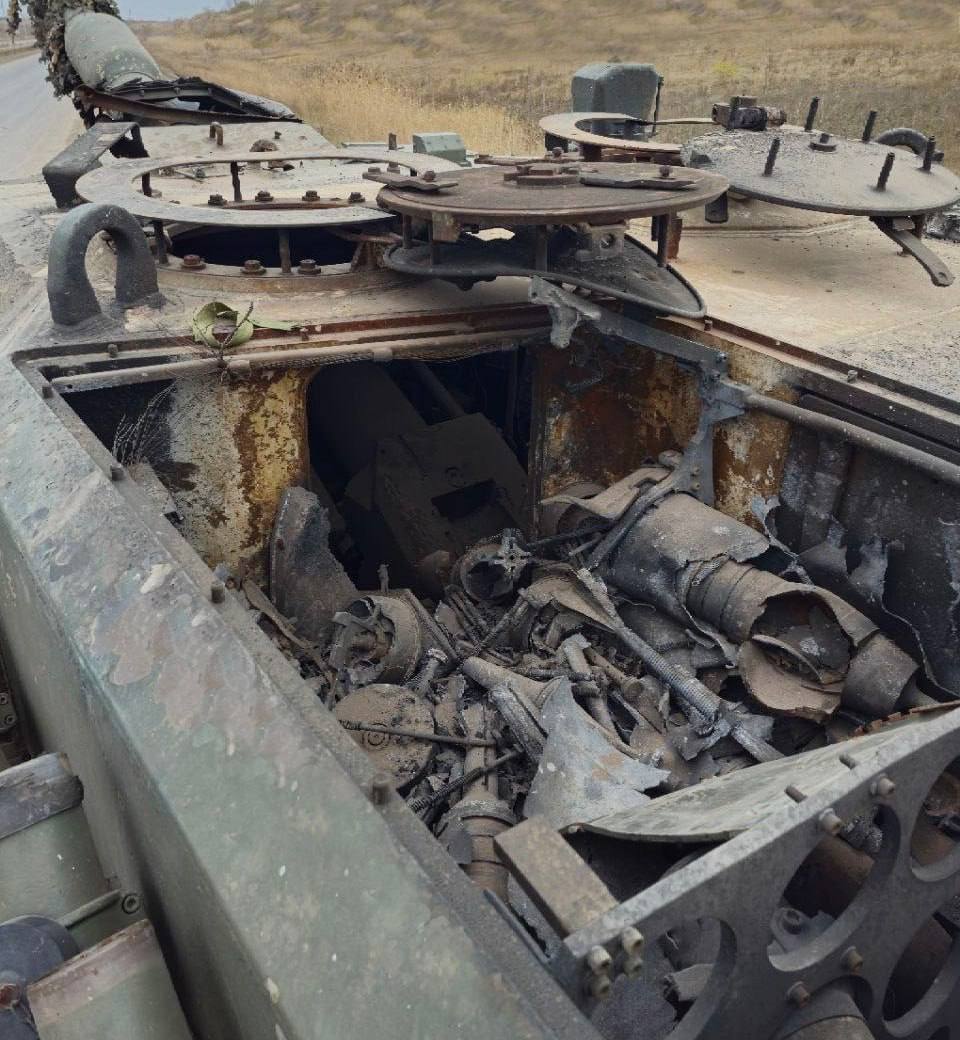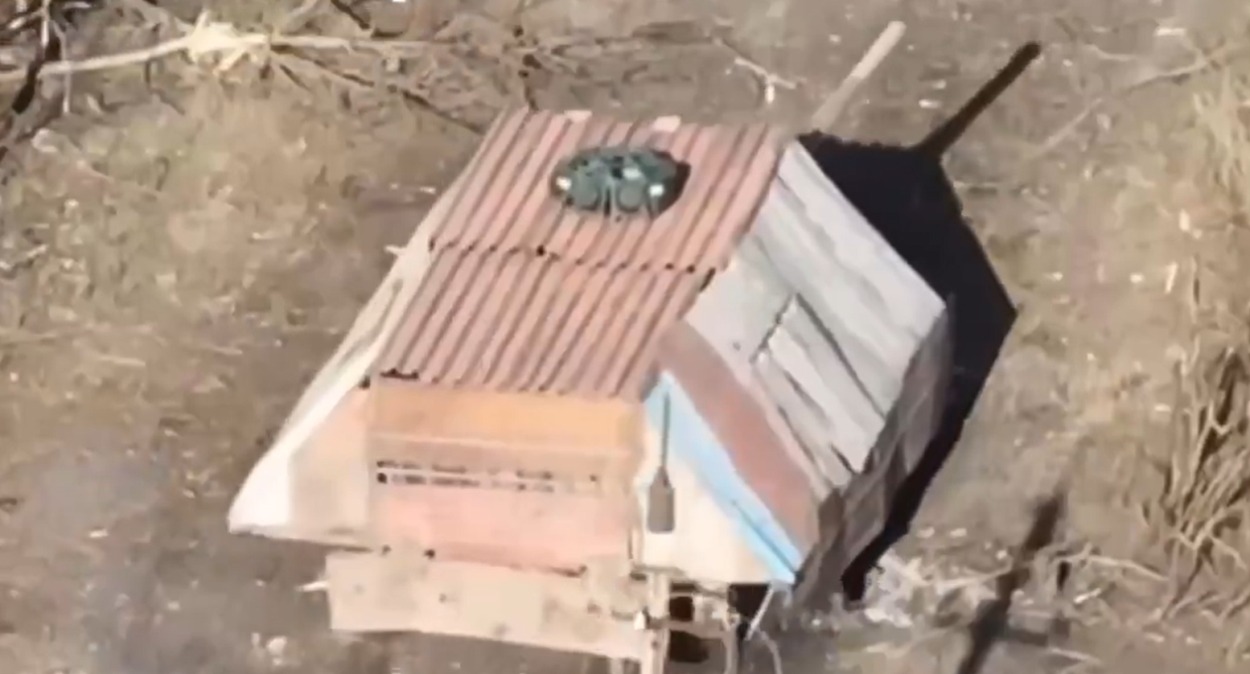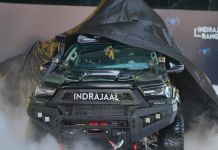The Israel Defense Forces (IDF) might have lost its most advanced Merkava-4 Barak Main Battle Tank (MBT) in Gaza for the first time since it launched an all-out ground invasion of the enclave.
The tank was struck by a gigantic Improvised Explosive Device (IED), according to claims on social media. A photo of the tank in question was first posted by an account named ‘Tank Posting’ on X (formerly Twitter). The images from different angles establish that the Merkava Mk-4 Barak has been damaged beyond repair.
In the photographs, some of the add-on armor appears to have been blown off by the explosives. Some military bloggers pointed to how the layers of the turret armor module were exposed and blown off in the explosion.
As per claims swirling on social media, only the driver of the tank survived, and the rest of the crew were killed in the explosion, whose magnitude could be imagined by looking at the wreckage of the tank. Some military watchers noted that while the IED capabilities of Hamas were questionable, they were powerful enough to annihilate the most well-protected tanks in the world.
The loss of Merkava Mk-4 Barak is significant because it is the latest and the most advanced variant of Israel’s prized Merkava series in IDF’s inventory. Inducted in 2023, the Merkava Mk-4 Barak features cutting-edge capabilities like 360-degree day/night camera coverage for increased situational awareness, an upgraded Trophy APS, and a direct energy system that can intercept drones and cruise missiles.

This beast of a tank has a fighter jet-style helmet-mounted display for the tank commander and new sensors that allow it to independently acquire targets and strike them quickly.
The IDF tweeted an image of this tank earlier, observing: “Equipped with artificial intelligence and VR training options, the Merkava Mk. 4 Barak will revolutionize the Armored Corps.”
Despite these claims, it turns out that the Merkava-4 Barak is not invincible as Israel has positioned it to be. Moreover, the destruction has also proved that the state-of-the-art, “world’s only combat-proven” Trophy Armor Protection System (APS) may not necessarily be a panacea for a main battle tank in combat, even against a much inferior force wielding massive explosive devices.
Some military bloggers took a dig at the tank, saying the world’s most advanced tank lies shattered somewhere in the sands of Gaza. Others pointed out that even though Israel often hides its tank losses, the pictures published online leave little room for it to do that.
The IDF had not taken cognizance of these claims at the time of writing this report.
This is not the first time that Israel has lost its Merkava tanks in the ongoing conflict. In its October 7 attack on Israel last year, Hamas claimed to have destroyed and captured several Merkava tanks along the border region. And while the exact location of the recently destroyed Merkava-4 Barak tank is not known, it is likely to be Northern Gaza, where the Israeli tanks have been advancing since October.
In addition to Hamas, the Lebanon-based Hezbollah group has also managed to attack, damage, and destroy several Israeli Merkava tanks ever since IDF started ground operations against them in southern Lebanon. As per Hezbollah’s claims, at least five Merkava tanks have been annihilated in the last month alone.
The heavy tank losses in the Israeli inventory, as well as at other battlefields across the world, prove that even the most advanced tanks are not invincible.
Tank Getting Obsolete?
The role played by tanks in modern combat has been called into question by military watchers, analysts, and strategists alike. The staggering number of tank losses in the ongoing Ukraine War, the second Nagorno-Karabakh War between Armenia and Azerbaijan, and now the Israeli offensive in Gaza and Lebanon are testament to this fact.
Russia is reported to have lost thousands of MBTs in about three years of war in Ukraine, besides an egregious number of armored vehicles. According to Ukraine’s estimates, Moscow suffered more than 9,000 tank losses. The estimate given by the weapon tracking website Oryx is humble at more than 3,500. Ukraine’s losses have been just as bad, if not more.
Notably, the mightiest and the most lethal tanks in the world have been obliterated in Ukraine, including the Russian T-90M, the German Leopard-2, as well as the US M1 Abrams. The conflict in Ukraine has demonstrated the effectiveness of inexpensive, disposable weapons, such as drones and next-generation light anti-tank weapons (NLAW), in rendering tanks inoperable.
Inexpensive drones equipped with explosives—each costing less than $500—have successfully destroyed a $10 million Abrams tank in Ukraine. The first-person view drones, or FPVs, have a camera that sends real-time views to its controller, who can use that information to target tanks in their weakest areas.
These drones appear to carry small explosives that aren’t strong enough to penetrate a tank’s heavy frontal armor; instead, they target thin, susceptible areas like the sides and roof. In multiple instances, it appears that the FPVs were dispatched to “finish off” tanks that had already sustained damage from mines or anti-tank missiles, making it impossible to recover and repair them from the battlefield.

According to experts, tanks have been particularly vulnerable in areas where their heavy-plated armor is the thinnest, such as the area between the hull and the turret, the rear engine block, and the top. So, to close the gaps, nations have retrofitted the tanks with sheet metal.
The concept was that a shell would be blunted and knocked off course when it struck the first layer of metal, reducing its effectiveness when it reached the main armor. Additionally, tanks equipped with spaced armor have been shielded from “shaped-charge” warheads that are carried by rocket-propelled grenades. Moreover, tanks have been given high-quality artillery and air support to prevent offensive actions.
To combat the menace of drones, several militaries have now opted for cope cages, metal grills, and super cage armor. Russia, for one, also came up with an innovation called turtle tanks, which you can read about here.
Ukraine has, likewise, adopted cope cages and other protective structures that would set off drones’ explosive charge early, decreasing the chance of projectiles from drones penetrating the hull. It also installed added protection to tanks acquired from NATO countries.

Writing for EurAsian Times earlier, Prakash Nanda explained: “As is the case with every weapon or combat platform, countermeasures have always been devised by countries to deal with the tanks, but they have survived and have become stronger.”
Viktor Murakhovsky, a retired Russian veteran, believes that “High-intensity combat operations between technologically comparable countries are unimaginable without the large-scale use of tanks,” given the tank’s firepower, mobility, survivability, endurance, and cost-effectiveness.
From the above, it is clear that tanks continue to play a significant role in combat. To dismiss it as outdated in contemporary conflicts would be premature. Top nations are also designing fourth-generation tanks with state-of-the-art features to avert their obsolescence and combat modern challenges.
It is also noteworthy that unlike the tanks used in the Ukraine War, the Israeli Merkava-4 Barak also features improved turret armor, giving the crew greater defense against drone strikes. And yet, it was an IED that took it out. As the Tank Posting account wrote: “There comes a point where no tank can survive a certain amount of explosives.”
- Contact the author at sakshi.tiwari9555 (at) gmail.com
- Follow EurAsian Times on Google News




